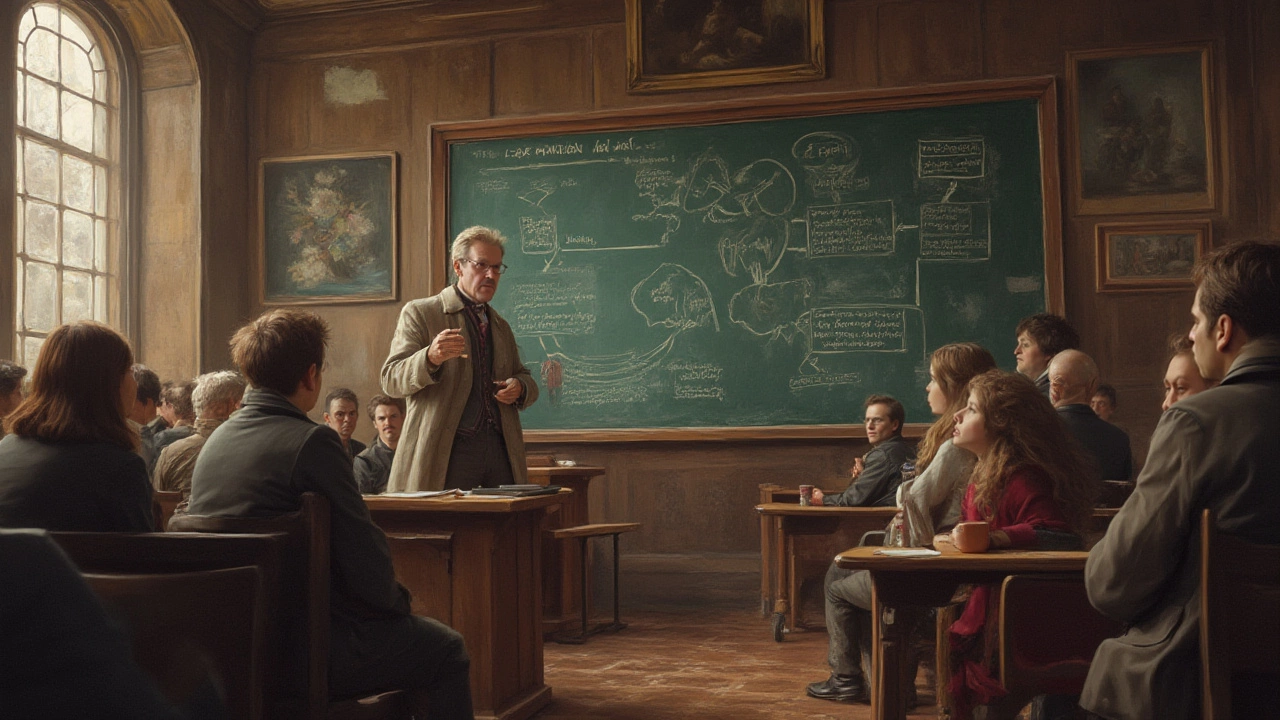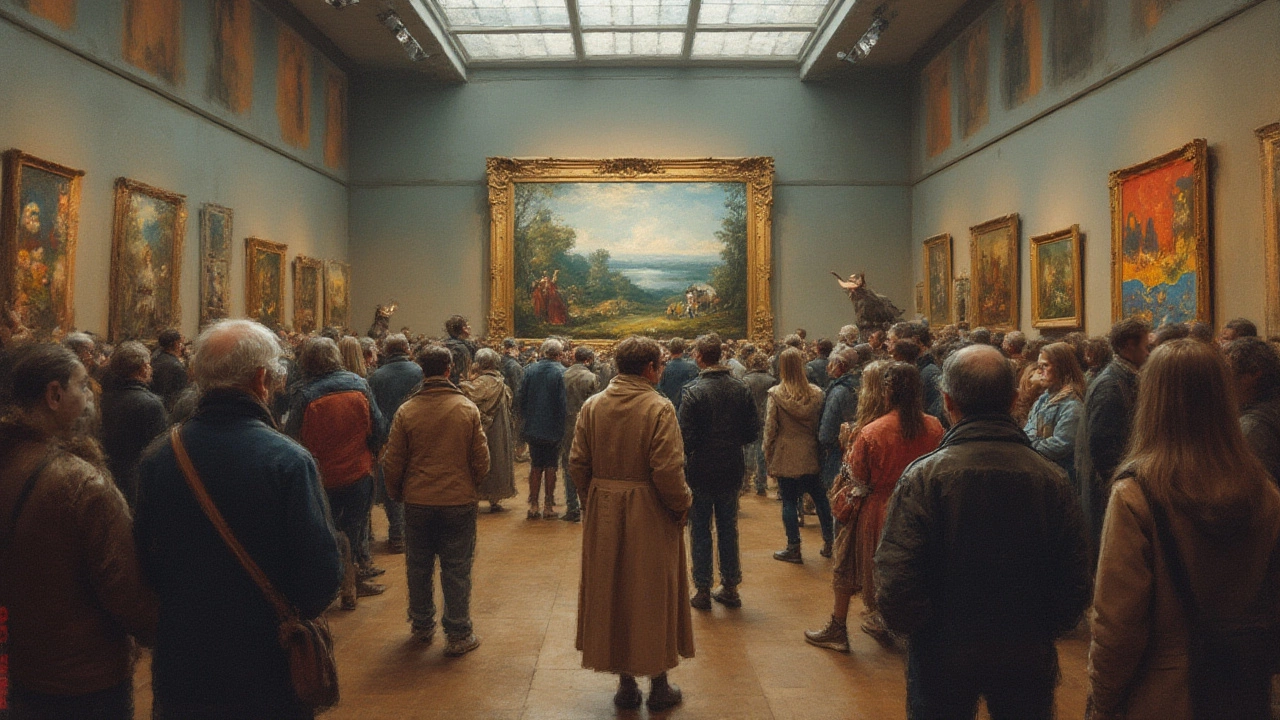Walk through any slick white gallery space, and the air feels different. Stare at a single color block with a stripe down the side, and you’ll probably hear someone mumble, “I could’ve done that with house paint.” The world is full of passionate arguments about modern art—some adore it, others just can’t stand the stuff. Where does all this dislike come from? It’s not just about taste. The pushback to modern art ties into history, identity, and even how our brains are wired. But the arguments aren’t as black and white as the canvases at a minimalist show.
The Roots of Resistance: Why Modern Art Feels Unfamiliar
For most of history, art meant paintings of people, places, or stories you could instantly recognize. Renaissance artists obsessed over lifelike faces and perfect sunsets. But in the early 1900s, the rules fell apart. Think Picasso, who scandalized Paris by painting faces in impossible cubes, or Jackson Pollock, dripping paint instead of wielding a brush. Suddenly, art stopped trying to look like the world and started focusing on feelings, textures, and ideas. Lots of people felt left out. When everything familiar crumbles, confusion follows. Kids once drawn to art for its beauty felt pushed away by something that seemed purposefully obscure.
It's not just taste—it’s about trust. Traditional art showed off the artist’s skill in painting a hand so real you’d think you could shake it. But a blank white canvas? It can trigger the suspicion that someone is pulling a fast one. In a 2020 poll by YouGov, almost 55% of American adults said they didn’t understand most modern art. That’s a lot of head-scratching. For many, modern art feels like an inside joke that only the art world is laughing at.
Lots of people stick to what’s familiar in art, just like with music or food. Classical music often feels more “authentic” than free jazz; a home-cooked meal comforts more than molecular gastronomy. Same with art—portraits and landscapes feel safe, relatable, and honest. Abstract swirls or installations of old TVs don’t fit the story our brains expect from art. Psychologically, people tend to judge unfamiliar art as less likable. That’s not just cynicism. Our brains are wired to enjoy patterns we already know.
The Power of the Art Market and Public Perception
If you want to ignite controversy, mention the price of modern art. Headlines about shredded Banksy paintings selling for millions, or a banana duct-taped to a wall at Art Basel, leave a sour taste with many people. It’s not just jealousy—it feels like the art world left everyone else behind. The business of art twists people’s trust. When people see a single-color canvas valued at $40 million, it’s easy to assume the art world is playing favorites or mocking everyday folks. The sense of exclusivity grows when gallery owners and art investors seem to speak a language of their own. Art auctions can feel more like a financial game than an artistic celebration. In 2017, Leonardo da Vinci’s “Salvator Mundi” sold for $450 million—big shock, sure, but why did Mark Rothko’s red rectangle sell for $86.9 million the same year? That disconnect stings, especially for people struggling to buy a framed poster for their living room.
Modern art’s opaque language doesn’t help. Curator notes and gallery descriptions sometimes seem lifted from a philosophy textbook. Instead of saying “this looks cool,” you get, “the artist explores the ontology of pigment as gesture.” Everyday viewers can feel alienated, as if the art is only made for critics, not for people who just want to feel something. Studies show that people rate art lower if they don’t understand the description, and even more so if those descriptions use highfalutin jargon.
Media plays a role, too. Late-night comedians make fun of odd installations, while news stories stoke outrage over public funding for “weird” art. This stuff seeps in. If you hear all your life that modern art is a scam, a joke, or an inside club, it’s tough to break down that barrier—especially when gallery doors can feel closed to everyone but the elite.
| Year | Artwork | Artist | Sale Price (USD) |
|---|---|---|---|
| 2017 | Salvator Mundi | Leonardo da Vinci | 450 million |
| 2012 | Orange, Red, Yellow | Mark Rothko | 86.9 million |
| 2019 | Comedian (Banana) | Maurizio Cattelan | 120,000 |
| 2021 | Everydays: The First 5000 Days (NFT) | Beeple | 69 million |

The Psychology Behind Modern Art Dislike
Brains crave order—patterns, stories, and easy explanations. Modern art, by design, throws those out the window. Abstract paintings, installations made of found objects, or performance art pieces barely register in the same part of the brain as portraits or still lifes. A 2011 study from the University of Vienna scanned people while looking at abstract art versus classic art. Guess what? Most brains worked much harder to find meaning in abstract pieces and, when they couldn’t, reported feeling bored, lost, or annoyed. Our eyes hunt for familiar shapes. When they only find color fields or randomness, that search feels unfulfilled.
Another huge reason is the way we learn about art. School art classes usually end at Impressionism or Cubism. Beyond that, it’s a black box. Without background or context, most people don’t know why an artwork matters—or what the artist hoped to say. If nobody explains why a Pollock drip painting was bold in 1949, it just looks like a mess. Huge studies from the UK show that, with a simple two-minute story about an artwork, people’s enjoyment rises by almost 40%. Storytelling is the secret sauce missing from many modern art experiences.
The fear of “getting it wrong” is real, too. Nobody wants to look foolish by praising something others think is silly or ugly. This social embarrassment keeps people quiet. Museums can be intimidating, with serious-faced guards and hushed rooms. Many people feel like outsiders before they even start.
If you think you “don’t get” modern art, you’re not alone. Try standing by a painting with friends, and listen to a dozen conflicting reactions—laughter, puzzlement, boredom, awe. It’s proof that this stuff is designed to confuse, provoke, or spark a reaction. The point isn’t that everyone must like it. Sometimes, just asking, “What do I feel?” is enough.
Ways To Connect With Modern Art (Without Pretending You Love It)
People don’t wake up and start swooning over splatter paintings. Give yourself permission to dislike things. Art shouldn’t require a user manual. Still, if you’re open to a new experience, a few tips can make the ride less bumpy.
- modern art is sometimes about process, not just the finished product. Watch short videos or documentaries that show artists at work—you might find meaning in their intent, even if the result looks strange.
- Find stories: Google the artist’s background or the event that inspired the piece. Good art usually connects to big emotions—anger, loss, joy. Knowing the backstory can change everything.
- Go with someone who’s curious, not a know-it-all. The best visits happen when people feel free to react honestly, without worrying about being “right.”
- Ignore the jargon. If a description is wordy or confusing, skip it. Listen to your gut response. Art is about how it makes you feel, not how much you know.
- Remember, art history is full of rebels. Even the Impressionists, once mocked for their blurry paintings, became classroom favorites. Modern art might look odd today, but often tomorrow’s critics see genius where skeptics saw nonsense. Trends change fast.
- Join a public art tour, or try a museum’s phone app for bite-sized explanations.
- Give yourself time. Some pieces are like bad first dates—awkward at first, but maybe more interesting on a second look.
Here’s a wild fact: Kids often prefer abstract art to realism, because their imagination fills in the blanks. Try tapping into that childlike curiosity if you feel lost in a modern gallery. Sometimes, asking questions like “What does this remind me of?” or “How would I make this differently?” can spark new ideas.
The gap between modern art lovers and skeptics isn't going away soon. Both sides have a point—art can be both a playground and a puzzle. Whether you love or hate it, the conversation itself is part of what keeps art alive. There’s no wrong way to react, as long as you’re honest.

